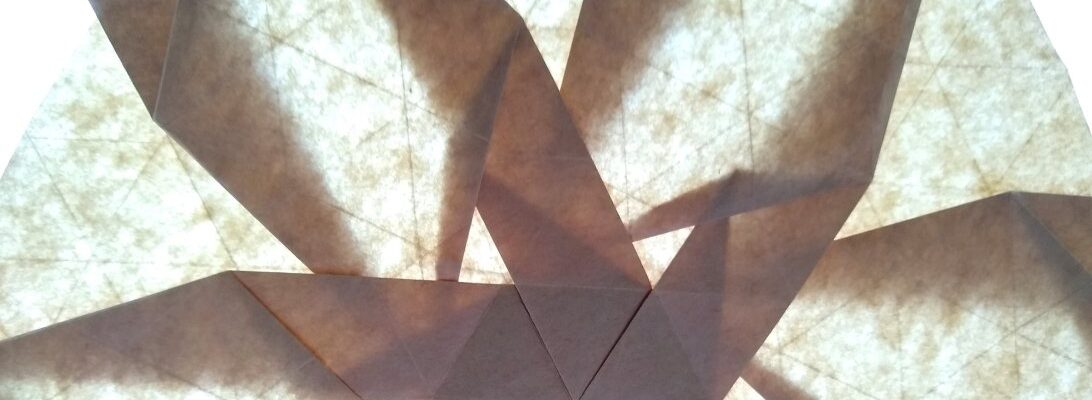It is a well known fact that Eric Joisel was a sculptor before taking up paper as his medium of choice. Never is it more evident than the figurative human series of nudes he made, of which this is my approximation of #4:

He uses an ingenious grid system, dividing each corner up into 18 radial lines, where they intersect geometry emerges on a square and that geometry provides the landmarks for the base.

I had tried 2 different schemes for corner division, failed both times until I realised that, relative to the centre line, the interval is a geometric series that increases the further away you get. In the end I used a CP template to “rough out” the divisions and then with my trusty straight edge, ironed out the anomalies.
Corners of the sheet give you arms and legs, the head is near the top middle and a torturous neck reduction brings the chin down to allow the face to look out. The layers are reminiscent of musculature and indeed, Joisel teased and primped, each model different, few photographed clearly enough to really see what was what.
Continue reading


















